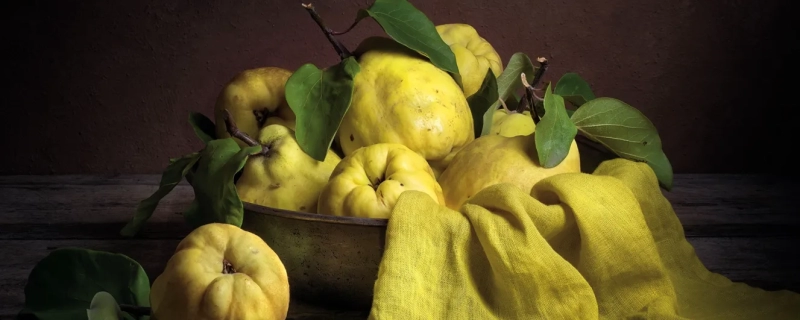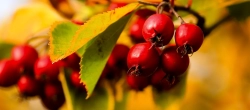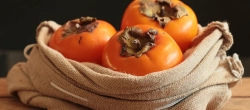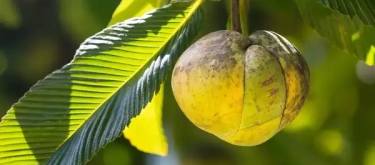Quince: Taste Profile, Aroma, Benefits and Health Risks
Quince is a unique fruit that has been cultivated for thousands of years and is revered in many cultures for its fragrant aroma and versatile culinary uses. Though quince resembles a pear or apple in appearance, its firm, astringent flesh and distinctive flavor set it apart. When cooked, quince transforms into a deliciously sweet and fragrant fruit, perfect for both sweet and savory dishes. This article explores the flavor characteristics of quince, its culinary applications, health benefits, and tips for selecting and storing it.
What does Quince taste like?

Primary Flavor Characteristics
Quince has a complex, floral flavor that’s enhanced by cooking. Raw quince is very firm and astringent, with a sharp, sour taste that softens and sweetens when cooked. Once prepared, quince has a fruity sweetness with notes of apple, pear, and a hint of citrus.
Aromatic and Taste Nuances
Quince has an intense fragrance, with notes of vanilla, citrus, and tropical fruit, making it a standout in jams, jellies, and baked goods. When cooked, the fruit’s astringency mellows, revealing a complex blend of flavors that is both fruity and floral.
Scientific Description of Taste and Aroma
- Aroma: Strongly floral, with notes of vanilla, citrus, and a hint of tropical fruit.
- Taste: Raw quince is tart and astringent; when cooked, it develops a sweet, fruity flavor with hints of apple and pear.
- Texture: Firm and gritty when raw, but softens to a tender, smooth texture when cooked.
In-Depth Flavor Analysis of Quince
Underlying Flavor Notes
Quince’s flavor evolves with cooking, revealing several distinct qualities:
- Fruity Sweetness: Cooked quince has a pleasant sweetness reminiscent of a mix of apple and pear.
- Floral Undertones: A strong floral quality permeates the flavor, making quince distinctively aromatic.
- Citrus Notes: Quince has a hint of citrus, giving it a refreshing brightness that balances its sweetness.
- Mild Tannin: Raw quince has astringency from tannins, which fades with cooking, leaving behind a subtle complexity.
Impact of Cooking on Flavor
- Raw Quince: Very firm, sour, and astringent; rarely eaten raw due to its intense sharpness.
- Cooked Quince: Develops a deep, sweet, and floral flavor with a soft, smooth texture, making it ideal for jams, jellies, and desserts.
Textural Qualities
The texture of quince changes drastically when cooked. Its firm, grainy flesh becomes tender and almost jelly-like, which is why quince is often used in preserves and sauces.
Culinary Uses of Quince
Primary Uses
- Jams and Jellies: Quince is high in pectin, making it perfect for jams, jellies, and marmalades that set well.
- Baked Goods: Cooked quince is used in tarts, pies, and cakes, adding a fruity, aromatic flavor.
- Sauces and Glazes: Quince can be cooked down into sauces or glazes for meats like pork, lamb, and duck, where it adds a touch of sweetness and acidity.
- Stewed and Poached Quince: Quince is often stewed or poached in sugar and spices, creating a rich, flavorful dessert.
- Compotes and Chutneys: Quince pairs well with spices in savory compotes and chutneys, which can be served with cheese or meats.
Ideal Pairings for Quince
- Spices: Cinnamon, cloves, nutmeg, and star anise enhance the sweetness and warmth of quince.
- Citrus: Lemon and orange add brightness to quince dishes, complementing its subtle citrus notes.
- Nuts: Almonds, walnuts, and pecans provide a nutty richness that balances quince’s fruity flavors.
- Meats: Pork, lamb, and duck pair well with quince, as the fruit’s acidity and sweetness add depth to savory dishes.
- Cheese: Sharp or creamy cheeses like Manchego, brie, and blue cheese pair excellently with quince in appetizers and cheese boards.
Health Benefits of Quince
Key Nutrients and Benefits
- High in Fiber: Quince is a good source of dietary fiber, which aids digestion and supports heart health.
- Vitamin C: Rich in vitamin C, quince helps boost the immune system and promotes skin health.
- Antioxidants: The antioxidants in quince, including phenolic compounds, help reduce inflammation and protect cells from damage.
- Potassium: Potassium in quince supports heart health by helping to regulate blood pressure.
- Anti-inflammatory Properties: Compounds in quince have shown potential anti-inflammatory effects, which may benefit overall health.
Potential Precautions
- Astringency in Raw Quince: The high tannin content in raw quince can be hard on the stomach and is generally unappealing, so it is best consumed cooked.
- Oral Allergy: Some individuals with pollen allergies may experience mild reactions when handling or eating raw quince.

Tips for Choosing and Storing Quince
How to Choose Quality Quince
- Firmness and Color: Look for quince that is firm and golden-yellow, as this indicates ripeness. Avoid green quince, which may be under-ripe.
- Aroma: Ripe quince has a strong, pleasant aroma; if it smells fragrant, it is ready for cooking.
- Skin Quality: Slight blemishes are common but avoid any with large dark spots or signs of decay.
Storage Recommendations
- At Room Temperature: Store quince at room temperature to allow any remaining ripening, and use within a week.
- In the Refrigerator: Ripe quince can be stored in the refrigerator for up to three weeks to prolong freshness.
- Freezing: Cooked quince can be frozen for later use in desserts and sauces, preserving its flavor and texture.
Fun Facts About Quince
- Ancient Fruit: Quince is one of the oldest cultivated fruits, dating back thousands of years in ancient Greek and Roman cultures.
- Mythological Significance: Quince is believed to be the “golden apple” from Greek mythology, often associated with Aphrodite, the goddess of love.
- Natural Pectin Source: Quince is naturally high in pectin, making it perfect for jams and jellies that set well without added thickening agents.











